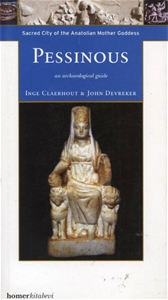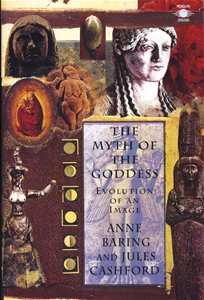Anasayfa > Kitap< Geri dönün
The Goddess from Anatolia (4 Kitap)
Yayınevi: Eskenazi
ISBN: 8885210090
9.000,00 TL (KDV Dahil)
Kargoya verilme süresi: 1 - 5 İş Günü
Yazar: James Mellaart, Udo Hirsch
Cilt tipi: Kutulu Karton Kapak
When The Goddess from Anatolia by Mellaart, Hirsch and Balpinar was published in late 1989, the simmering, five-year-long Çatal Hüyük controversy came to a boil. The character of the debate over James Mellaart's Neolithic Anatolian kilim hypothesis shifted abruptly. It suddenly focused on the credibility of 44 startling new drawings of "reconstructed" wall paintings. Complex issues, such as design diffusion and historical continuity, became irrelevant. I want to provide a little background on this dispute and summarize the factors that prompted my involvement in it. My piece entitled A Weaver's View of the Çatal Hüyük Controversy which was published in the August/September 1990 issue of Oriental Rug Review, is posted separately on this website. A related book review by Murray Eiland appeared in the same 1990 edition of ORR. I will refer to arguments presented in those pieces, I shall comment on Mellaart's response, and then I will assess the current state of the controversy.
Mellaart first suggested a possible Neolithic "kilim connection" at the 1983 International Conference on Oriental Carpets in London, prompting many of us to eagerly study his earlier articles, reports, and 1967 book, Çatal Hüyük, A Neolithic Town in Anatolia. The Turkish archaeological site of Çatal Hüyük, excavated by Mellaart in the early 1960's, was fascinating; the possibility of Neolithic roots for kilim design was intriguing. Mellaart's basic theory held that large paintings on some interior walls of this complex were copies of actual woven kilims used in other, more important buildings. The paintings were supposedly less expensive substitutes. Pegs were said to be positioned for suspending some of the hangings. Although no actual remains of 8,000-year-old tapestry weavings were found, motifs that Mellaart claimed to have sketched from fragmented paintings were surprisingly like those on kilims of today.
The written version of Mellaart's conference presentation was published in Bertram Frauenknecht's 1984 book, Early Turkish Tapestries. Major flaws in the argument immediately became apparent. We saw significant problems glossed over, and hypotheses treated as established facts. No documentation was offered. No photos supported the small sketches of supposed Neolithic kilim motifs: a figure holding two birds, winged deities, globular goddesses stacked in niches, and many others (shown below). No clues indicated how these images fit into the larger scheme of things at the Çatal Hüyük site; the shrines from which they supposedly had come were not identified. The visual presentation itself was confusing, since sketches of tangible clay artifacts, motifs from modern kilims, and undocumented wall-painting motifs were all mixed together.
İngilizce
1989
396 Sayfa - 4 Kitap
24 x 30 cm

 Handmade Prayer Carpet Through History
Handmade Prayer Carpet Through History Ancient Goddesses : The Myths and the Evidence
Ancient Goddesses : The Myths and the Evidence Sacred City of the Anatolian Mother : Pessinous
Sacred City of the Anatolian Mother : Pessinous The Myth Of The Goddess
The Myth Of The Goddess Traditional Turkish Designs & Handicrafts (Karton Kapak)
Traditional Turkish Designs & Handicrafts (Karton Kapak)